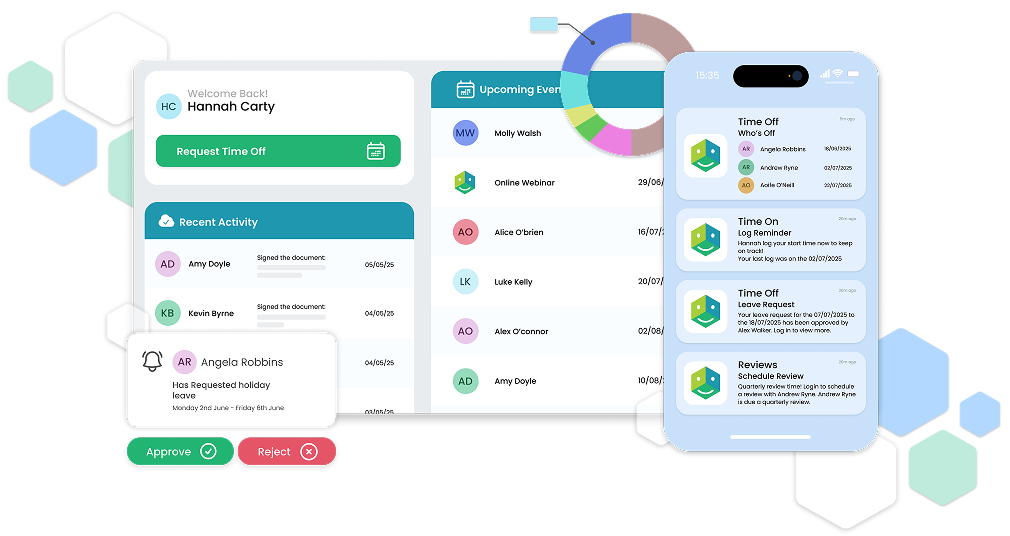As offices across Ireland continue to re-open and organisations look towards a post-pandemic future, in which hybrid working models have become the default, much emphasis will be placed upon maintaining the productivity increases achieved through lockdowns.
Striking a balance between too much and too little workplace pressure is a fine art. Too little, and your people will likely become bored and disinterested. Too much, and you run the risk of burnout.
And that seems to be exactly the case here in Ireland, as a new HRLocker survey of 1,000 people in full-time employment has revealed that over half (52%) are experiencing burnout, with those working for charities and not-for-profits reporting much higher incidences of 68%.
What is Job Burnout?
A growing concern across the globe, in 2020 the World Health Organisation (WHO) classified job burnout as a medical condition, describing it as “a syndrome conceptualised as resulting from chronic workplace stress that has not been successfully managed…Burn-out refers specifically to phenomena in the occupational context and should not be applied to describe experiences in other areas of life.”
In short, while a certain amount of workplace stress can positively impact an employee’s performance and satisfaction levels, prolonged, unmanageable levels of stress can lead to long-term physical and mental health issues.
Because we all deal with stress differently, job burnout can manifest in different ways. However, some of the more common signs of the condition include:
- Feeling exhausted or depleted of energy
- Feeling mentally and emotionally removed from your job
- Feeling negative, cynical, or disillusioned about your job
- Reduced satisfaction from your achievements
- Reduced professional efficacy
- Difficulty concentrating
- Unexplained physical ailments such as headaches and stomach pains
Many of these symptoms can be related to depression and other underlying illnesses. As such, it is always advised that individuals speak to a doctor or medical health provider if they’re experiencing one or more of them.
With the shift to hybrid working, the distinction between work time and personal time is likely to remain an issue for the foreseeable future, as is employee anxiety over office work and health and safety.
Now, more than ever, organisations must take effective measures to support their employees. Introducing processes to monitor workload, putting employee support structures and establishing a constructive, two-way dialogue with their teams.

6 Steps to Mitigate Employee Burnout
Not only can HR platforms, such as HRLocker, significantly reduce the administrative pressure on HR professionals, enabling them to invest more time in people-focused initiatives; but they also empower employees to take a more active role in the management of their career, from booking annual leave to controlling their professional development.
Download for FREE HRLocker Job Burnout Report.
Below are some simple practices HR professionals can encourage hybrid working employees to adopt as a means of reducing workplace stress and job burnout.
1. Establish clear boundaries between their professional and personal lives. Where possible, having a designated workspace can be highly beneficial. Otherwise, developing a ritual of putting their laptop away when the workday ends can offer a similar psychological break from work.
2. As above, when the workday ends, turn off email and work notifications. If this feels a little scary, encourage them to switch on their out-of-office. The important thing here is that they mentally disengage from the office once they’ve clocked off.
3. Encourage them to take more personal time, whether that’s getting outdoors for a walk, going to the gym or simply sitting and reading a book. What’s important is that employees are making time and devoting headspace to the things they enjoy.
4. There is no ‘one size fits all’ hybrid model. While striking a balance between individual needs and those of the organisation can be tough, taking the time to meet with employees and establish flexible schedules, that help them balance their days, will reap huge rewards.
5. Offer mental health support and screening services to all employees. Tackling stress and anxiety early can save your organisation significant trouble down the line.
6. With a host of tools, such as clock-in/ clock-out, geolocation tracking and performance management, HRLocker enables organisations to better manage off-site employees, monitoring workload and identifying potential burnout before it happens.










